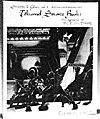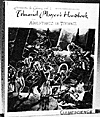 Swords & Glory Volume I, Tekumel Source Book
Swords & Glory Volume I, Tekumel Source Book
Written by M.A.R Barker
Gamescience 09156 Pass Rd.,
Gulfport, NIS 39501 Released: 1983
Catalog No. 10105
Price: $25
Complexity: Experienced
Solitaire Suitability: None
*****
 Swords Glory Volume II, Tekumel Player's Handbook
Swords Glory Volume II, Tekumel Player's Handbook
Written by MA.R. Barker
Garnescience 09156 Pass Rd.,
Gulfport, MS 39501 Released,. 1984
Catalog No, 10106
Price: $20.00
Complexity: Experienced
Solitaire Suitability: None
* * 1/2
The Swords & Glory books are MA.R. Barker's newest major releases in his effort to bring the world of Tekumel to the fantasy gamer. For anyone interested in discovering just how wild, exotic and different a truly imaginative high fantasy game world can be, the Tekumel Source Book is a must buy. in it, the author describes in amazing detail the unique world that is Tekumel. The book is crammed with a tremendous amount of information on a world that is unlike any other. The Tekumel Player's Handbook is a book for the person who actually wants to run the world of Tekumel, and includes a very complex combat and sorcery system and details about how to create a character as well as information on maps, movement, and the abilities of non-human races. Each book comes boxed with full color maps in Volume I and with a pair of percentiles in Volume II.
The books are heavily staple bound and look like they will hold together through a great deal of use. A combat and sorcery system summary booklet is also included in Swords and Glory Volume II, which will come in very handy if you want to run the very complex combat or sorcery systems without losing your mind. The two volumes of Swords and Glory that have been published so far are designed to work together as a unit. The numerical chapter and section headings in both books are complementary and references are often made between books.
Volume I's section headers always begin with the number 1 and Volume II's with a 2. This detailed breakdown by section headings was really an absolute necessity, since there is no index in either book and the amount of material here is almost overwhelming. The Tekumel Source Book contains 135 pages of very small type and Tekumel Player's Handbook is 240 pages of small type. This makes book I about 189,000 words long, and book II, with its huge number of charts and tables, somewhere around 200,000 words long.
Without the section headings, finding anything in these books would have been very difficult. There is a strange warning on the back of each of the boxes that these books come in. It is strange because it is completely unnecessary and likely to turn away some buyers. "WARNING!!! This is NOT a complete game ... you must have a copy of Empire of the Petal Throne (EPT) to play this game system." This is patently untrue.
The Tekumel Player's Handbook provides a system that (although not very good) is complete and better than the variant D&D system that appears in EPT. The artwork in both volumes is competent and shows talent, but is uneven and lacks a professional quality that would make it appealing. The covers are particularly difficult to make heads or tails of, because of composition problems. In any case, there is very little artwork at all, since there has been an obvious effort to squeeze as much material into as little space as possible. With either of these books, you will get your money's worth, but the Tekumel Source Book is the real treasure here. There is so much imaginative, well thought out work presented in this single book that a referee who has even a tiny amount of imagination could use it as a springboard into literally hundreds of scenarios or a dozen different campaigns. Two out of three individual paragraphs suggest a scenario at least, if not the focus for a campaign length adventure.
There is almost too much information to absorb, since the world of Tekumel is so alien compared to any other fantasy world that the reader is likely to know. This is a fantasy world presented the way it should be. A warning of sorts is necessary, however.
Tekumel is not a world that can be easily adapted to another campaign. The various elements of Tekumel are all interrelated and the removal or change of too many of those elements will collapse the whole intricate structure
The author has made no compromises in the presentation of his material and the result is an intricate fantasy world that must really be taken as a whole to be to its best advantage. True, there are undeveloped areas on the world where divergent societies and campaigns could evolve, but the emphasis of the book is to provide a source for role- playing in the highly detailed "Five Empires" area of Tekumel.
There has been no attempt to write down to a younger audience; the material challenges the reader and has not been changed to appeal to those whose tastes are fragile or simple. The author does not hesitate to use words like "impecunious" or "adumbrated" and his descriptions of some of the more earthy goddesses, marriage customs, or matters of etiquette are quite enough to send lesser publishers scrambling for the phone. Nor does he hesitate to force the reader into something like a crash course in the languages of the Five Empires.
Nothing with a title is ever mentioned solely by its English translation; things are always presented using the difficult languages of Tekumel first, then a translation is provided. It takes quite some time to become comfortable with even the most commonly recurring word such as "Mu'ugalavya'," "N'luss," "Milumanaya'," or "Tlokiriqaluyal."
If a single word had to be used to describe Tekumel, that word would have to be "baroque." Baroque in the sense of an amazingly complex, intricately constructed thing whose very size and detailing is awe inspiring. Tekumel owes nothing to the standard traditions of high fantasy, and aside from Glorantha, it has no real competitors in the fantasy role-playing field.
Unfortunately, "baroque" is also the best description of the Tekumel Player's Handbook combat system. Although an intricate and detailed word description is to be hoped for, a combat system that is overly complex and difficult to grasp in its entirety is no boon.
The game system in Swords and Glory Volume II does not have the unified approach to conflict resolution that is typical of more recent systems. This makes it a throwback similar to older systems like Chivalry & Sorcery, with its huge number of individual rules modifications for every possible action or situation in combat. There are 31 different tables that could become necessary to look up in any combat, a list of 27 possible combat actions, many of which have specific modifiers to percentages, and there are also 60 different modifiers to combat that defy memorization.
Combat cannot be run "off the top of your head" as is possible with more recent systems that take a more general approach to combat and action or situation modifiers. Because of this, the Tekumel Player's Handbook system was outmoded as soon as it was published.
While Volume II cannot be recommended for its combat or sorcery system there is material here for the referee who is interested in actually running a Tekumel-based campaign. The material on character creation is useful and comprehensive, though it would be necessary to adapt the system-specific information to another set of mechanics to get a runnable game. A referee would also find the information on non-human characters to be a worthwhile aid to campaign setup, as would be the material on gaining sorcerous training. The 90 pages of spell lists are exotic, but also repetitive as several versions of the same spells are listed with only slight differences in power to distinguish them.
All in all the Tekumel Player's Handbook is mistitled. The information is of little use to a player, and indeed contains material that a referee might not want his players to have. The book is worth the money for a GM who really wants to run Tekumel, but not for anyone else. While the Tekumel Source Book presents a high fantasy world, it is firmly based in a world where technology wo&. Magic is explained as a use of other planar energies focused by devices or psychically talented individuals. This opens up the possibility to use Tekumel for some very interesting crossover campaigns. It would be interesting to see the reactions that a group of Imperial Scouts from Travellerg Imperium or ARM agents from Ringworld would have to this highly developed and really bizarre world.
Whether or not you end up running Tekumel, the Tekumel Source Book is worth having just to marvel at and use for inspiration. Even if you never use any of its specific ideas, Tekumel is a wonderful model for complete documentation and imagination in the creation of a fantasy world. It is a shame that the author's ability to handle game mechanics does not live up to his tremendous talent in creating Tekumel. if the Tekumel Player's Handbook was as good as the Tekumel Source Book, there would be no better combination of game world and game system in the whole hobby.
More Role-Game Reviews
-
Game Review: Final Challenge Role Aids Module
Game Review: Swords & Glory Volume I, Tekumel Source Book
Game Review: Thrilling Locations A James Bond 007 Game Supplement
Game Review: To Tackle The T.O.T.E.M. A Villains and Vigilantes Module
Game Review: Thutmose's Night Adventure for Chill
Game Review: The Free City of Krakow Twilight: 2000 Series Module
Back to Table of Contents -- Game News #10
To Game News List of Issues
To MagWeb Master Magazine List
© Copyright 1985 by Dana Lombardy.
This article appears in MagWeb (Magazine Web) on the Internet World Wide Web.
Other military history articles and gaming articles are available at http://www.magweb.com